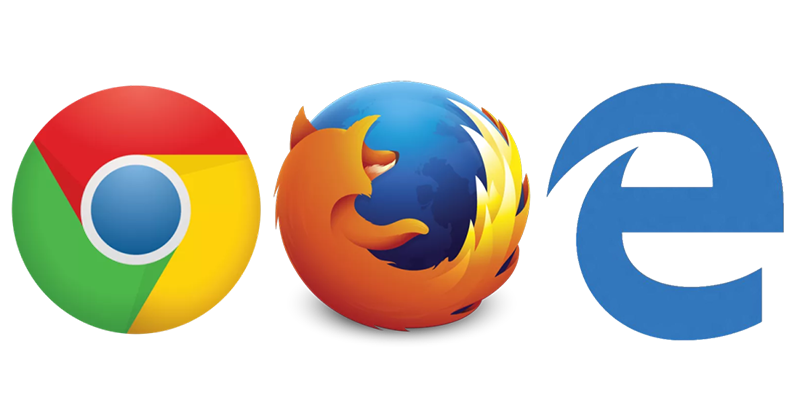Which browser is the fastest: September 2015
 In Google Chrome, there are various improvements in the use of RAM . Mozila is preparing to switch to multi-threaded tab architecture and on January 26 it will make the signature of Firefox extensions mandatory . Most recently, the operating system Windows 10, and Edge written from scratch for more than a month in the release. In the ongoing browser warfare, new battle conditions emerged, which were tested by the VentureBeat edition. 8 different tests were performed. If you add up the results in short, Edge won in 3 tests, Chrome in 3 and Firefox in 2. Safari, Internet Explorer and others were not evaluated.
In Google Chrome, there are various improvements in the use of RAM . Mozila is preparing to switch to multi-threaded tab architecture and on January 26 it will make the signature of Firefox extensions mandatory . Most recently, the operating system Windows 10, and Edge written from scratch for more than a month in the release. In the ongoing browser warfare, new battle conditions emerged, which were tested by the VentureBeat edition. 8 different tests were performed. If you add up the results in short, Edge won in 3 tests, Chrome in 3 and Firefox in 2. Safari, Internet Explorer and others were not evaluated.The test results are summarized in the table below. The winning result of each test is bold.
| Test | What value is better | |||
|---|---|---|---|---|
| SunSpider 1.0.2 | Lower is better | 188.8 ms | 172.1 ms | 83.8 ms |
| Octane 2.0 | Higher is better | 31161 | 25907 | 32921 |
| Kraken 1.1 | Lower is better | 1093.1 ms | 1155.5 ms | 1142.2 ms |
| JetStream 1.1 | Higher is better | 175.41 | 165,60 | 198.70 |
| Oort Online | Higher is better | 9710 | 9540 | 7300 |
| Peacekeeper | Higher is better | 4702 | 5320 | 3018 |
| WebXPRT 1.998 | Higher is better | 360 | 465 | 405 |
| HTML5Test | Higher is better | 521 | 466 | 397 |
What was generally evaluated?
For tests, VentureBeat took a computer with an Intel Core i5 4440 processor (6 MB cache, basic frequency 3.10 GHz), 8 GB of DDR3 RAM and Nvidia GeForce GTX 460. A 500 GB hard disk with a rotation speed of 7200 revolutions per minute was divided by parts. A new Windows 10 Pro (64-bit version) was installed in the new 75 GB area, and then all updates available at that time were rolled into the OS. The image was displayed on a 24-inch monitor with a resolution of 1920 × 1080 pixels. Of course, attempts to repeat these tests will lead to different values of their results due to differences in computer performance and software versions.
The tests used the following versions of browsers:
- Google Chrome 45.0.2454.85;
- Mozilla Firefox 40.0.3;
- Microsoft Edge 20.10240.16384.0.
SunSpider version 1.0.2 is a benchmark for the core components of JavaScript, but not for DOM elements or other browser APIs. Its purpose is to ascertain the health of the browser in tasks that exist in the real world, as well as possible in the near future. Developed by the WebKit team. In this test, Edge finished with a margin.
')
Octane is a Google benchmark for JavaScript. Version 2.0 was used. Strange, but the Chrome browser itself did not win in this test. Let google browser and pulled away from Firefox, but here won the Edge .
Kraken JavaScript speed benchmark was developed by the creator of Firefox, Mozilla. The test was conducted in version 1.1, Chrome got the first place, followed by Edge and Firefox.
JetStream version 1.1 was written by Apple. The benchmark runs several JavaScript tests and then calculates the geometric average of their results. Here the first place was taken by Edge .
The online application OortOnline.gl measures the performance of WebGL, a JavaScript component for rendering 2D and 3D graphics. This is a test from the creators of the same game . Chrome was ahead, Firefox was not far behind, and Edge was slightly behind.
Peacekeeper from the developer of computer benchmarks Futuremark takes into account many aspects of the browser, mainly rendering, mathematical operations and memory. I won the Firefox test, and the low Edge score was apparently caused by the lack of the necessary codecs.
Benchmark WebXPRT version 1.998 was written by the manufacturer of benchmarked Principled Technologies. Firefox did the best job.
As the name implies, HTML5Test verifies the implementation of standards for the fifth revision of the HTML markup language. The maximum compliance with standards is estimated at 555 points, this is the limit of this test. Chrome got the best mark, and Edge has a lot to do.
In general, none of the browsers showed a significant advantage over the others. According to the test results, all three have approximately equally good performance. But the most interesting thing is that it does not lag behind the browser, which is installed in Windows by default. Will Edge be able to win a piece of Chrome and Firefox audience? Browser war continues.
Source: https://habr.com/ru/post/366389/
All Articles